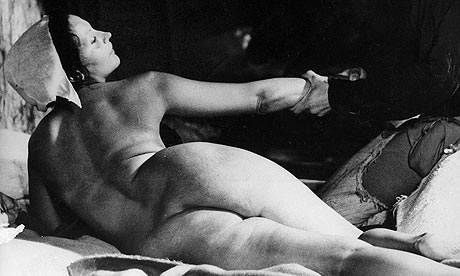
Giovanni Boccaccio's 14th-century literary masterpiece The Decameron may hold the recipe to defy these troubled times. Boccaccio's collection of 100 stories told over 10 days is set against the backdrop of a crisis that puts today's credit problems in perspective: the black death. He begins it with a harrowing piece of reportage on the plague in his city, Florence, describing how the disease spread across Europe in 1347-8, killing rich and poor alike in such terrible numbers that bodies littered the streets, the sick were shunned by their families, and funeral rites were abandoned. He paints a picture of a society on the brink of absolute disappearance - would everyone in Florence die? Everyone in Europe?
Yet this shocking opening is the prelude to a book of life, laughter - and sex. Seven young women and three young men meet in a church in Florence and decide to take desperate measures to escape the plague. They flee to a country estate, and there, cut off from the suffering around them, spend a beautiful holiday in the green hills beneath the blue sky. They dance, sing, and every day each of them has to tell a story, on themes set by each day's "ruler". The stories include tragedies and ghost stories but most are comic, and the most memorable are erotic.
Boccaccio is much ruder than Chaucer, who was influenced by him. Or, to put it more accurately, he's more explicit, more comprehensive. Most strikingly, he shows no hint of Christian remorse over his bawdy fun. Neither he nor his characters seem in the least tormented by religious scruple. Painters and merchants, nuns and priests alike all render unto the body what is the body's. In one story a young nun is caught with a lover in her room. In the middle of the night she is disciplined by the abbess, who rains down condemning words - until everyone notices that on her head she is wearing not her headdress, but the breeches of her own lover that she put on by mistake in the rush to judgment. So the young novice gets to keep her lover, and the abbess keeps hers; and the nuns who don't have lovers, says Boccaccio, console themselves as best they can.
In another tale, a man's friends persuade him he is pregnant. He blames his wife for always going on top - "I told you this would happen" - and gives his friends the money to arrange an abortion, which they spend on a hearty meal.
And what has all this to do with times of crisis?
Well, as we've seen, Boccaccio emphatically places the storytelling marathon in the time of the black death. Not a single story in the cycle refers to it - but the stories as a whole are about new life, about survival and about the human activity that will repopulate the world. Europe has lost so many of its people but new ones will be born. He himself speculated that sexual mores loosened during those desperate days, and his stories reflect this. The moral is that people can be happy, prosperous and creative even in the worst of times: nothing quenches the life force.

